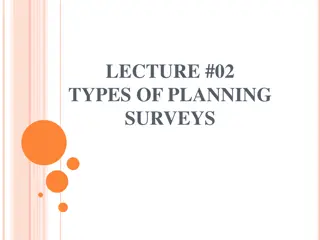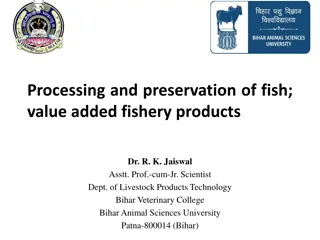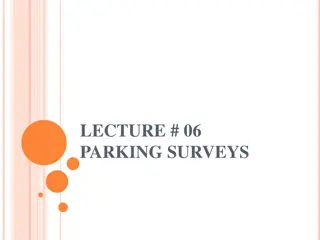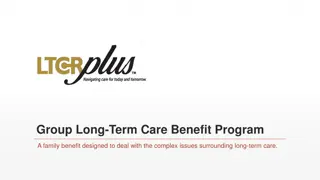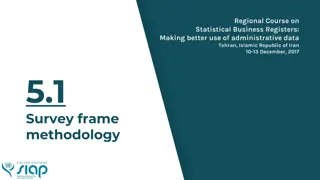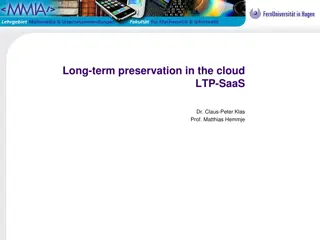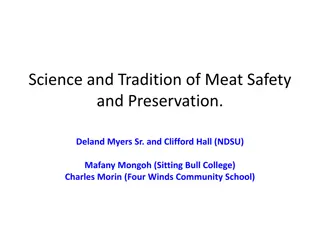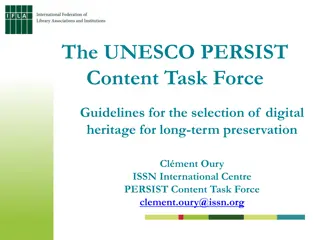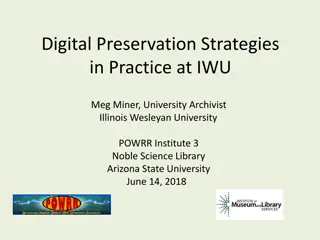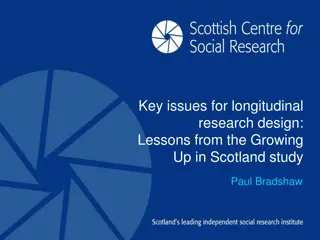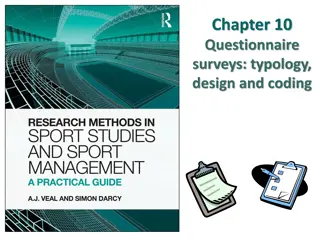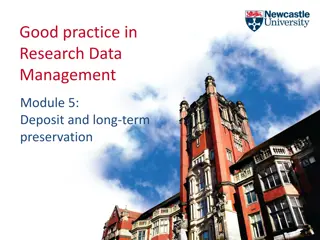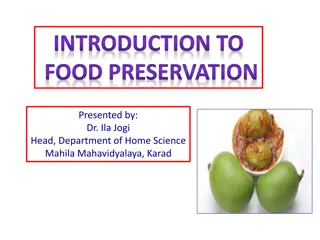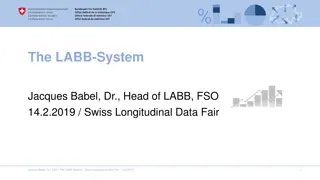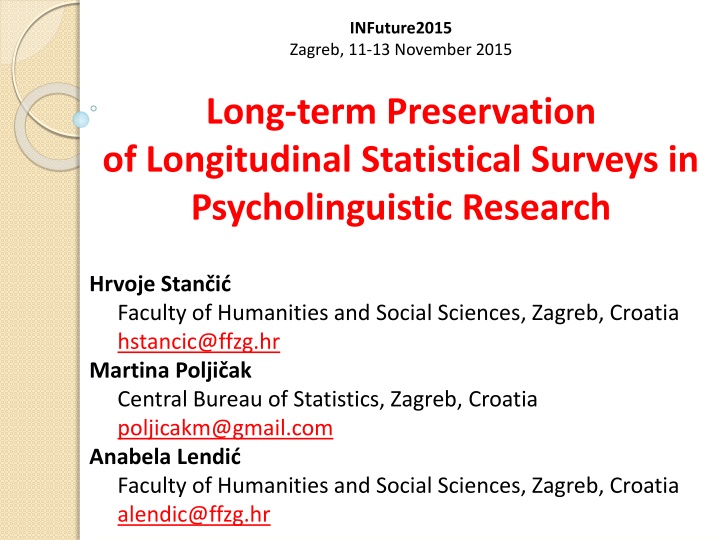
Long-term Preservation of Longitudinal Statistical Surveys in Psycholinguistic Research
This presentation delves into the interdisciplinary nature of psycholinguistics, exploring the collection, processing, and preservation of sensitive personal data in aphasia research. It raises questions about utilizing Official Statistics models in health-related digital records and aphasia research.
Download Presentation

Please find below an Image/Link to download the presentation.
The content on the website is provided AS IS for your information and personal use only. It may not be sold, licensed, or shared on other websites without obtaining consent from the author. If you encounter any issues during the download, it is possible that the publisher has removed the file from their server.
You are allowed to download the files provided on this website for personal or commercial use, subject to the condition that they are used lawfully. All files are the property of their respective owners.
The content on the website is provided AS IS for your information and personal use only. It may not be sold, licensed, or shared on other websites without obtaining consent from the author.
E N D
Presentation Transcript
INFuture2015 Zagreb, 11-13 November 2015 Long-term Preservation of Longitudinal Statistical Surveys in Psycholinguistic Research Hrvoje Stan i Faculty of Humanities and Social Sciences, Zagreb, Croatia hstancic@ffzg.hr Martina Polji ak Central Bureau of Statistics, Zagreb, Croatia poljicakm@gmail.com Anabela Lendi Faculty of Humanities and Social Sciences, Zagreb, Croatia alendic@ffzg.hr
Introduction Psycholinguistics Interdisciplinary nature of the field Different types of evidence and obtained data Language-specific research data Aphasia (speech-language pathology) Aphasic subjects taking part in clinical therapy Aphasia research Standard informed consent form Personal information 2
Introduction Psycholinguistic research Access to sensitive personal data and its protection in different research phases: collecting data PROCESSING data preserving data (for secondary use) What about long-term preservation and managment issues concerning data, standards, etc.(?) 3
RESEARCH QUESTION(S) / MOTIVATION Official Statistics (OS) has developed a sophisticated ecosystem of models used by OS organizations for collection, processing,and dissemination of statistics. Could OS models or OS concepts be used in collecting, processing, and preserving health- related digital records? In aphasia research? 4
DATA COLLECTION Statistical Classifications (in medicine ICD, ICF, ICHI, NUTS for territory units, and many others...) Thesaurus Nomenclatures The Neuch tel Terminology Model (NTM) provides the framework for the development of a classification database semantic and conceptual sphere of metadata not related to technical aspects of a classification database 5
DATA PROCESSING Two categories restricted unrestricted Data classified as - confidential data - internal/private data - public data Data (variables) classified as - identifier - quasi-identifier - sensitive attributes - non-sensitive attributes 6
Interoperability and Shareable Artefact Catalogues Interoperability set of common principles and standards within and between statistical organisations GSBPM define business processes in OS GSIM conceptual model set of standardized information objects Global Catalogues reusable processes, information objects and statistical services Common Statistical Production Architecture (CSPA) 7
LONG-TERM DATA PRESERVATION Data (and records) should stay at all times: authentic reliable usable, and its integrity should stay preserved 8
Standards in OS Metadata standard Description A metadata specification for the social and behavioral sciences created by the Data Documentation Initiative. Used to document data through its lifecycle and to enhance dataset interoperability. Data Documentati on Initiative (DDI) Statistical Data and Metadata Exchange (SDMX) A self-describing data format that provides both metadata and a method of data transmission. It is primarily used in "the world of official statistics", such as the EU, WHO, UNESCO, World Bank, and US Reserve Banks. 9
Recommendations (I) Preserve the raw data, but remove variables such as name, social security number, and home address Use Data Disclosure Control Methods most basic methods for maintaining privacy include limitation of details, top/bottom coding, suppression, rounding and addition of noise Management system to handle data sensitivity levels and access rights 11
Recommendations (II) A system with functionalities similar to those of Statistical Metadata System (SMS) could be used to manage sensitive health-related data! Access to data objects according to users and user groups rights! 12
Recommendations (III) Use: standardized and globally accepted file formats Assure accessibility according to retention policies! Always have Data/Records Management Plan! 13
CONCLUSION Interdependence between the needs of psycholinguistic research and available models and standards in official statistics Solutions considered here include the ones for data collection statistical survey processing, and records management Knowledge and solutions from official statistics and modern archival science could be combined! 14
THANK YOU! Long-term Preservation of Longitudinal Statistical Surveys in Psycholinguistic Research Hrvoje Stan i Faculty of Humanities and Social Sciences, Zagreb, Croatia hstancic@ffzg.hr Martina Polji ak Central Bureau of Statistics, Zagreb, Croatia poljicakm@gmail.com Anabela Lendi Faculty of Humanities and Social Sciences, Zagreb, Croatia alendic@ffzg.hr


